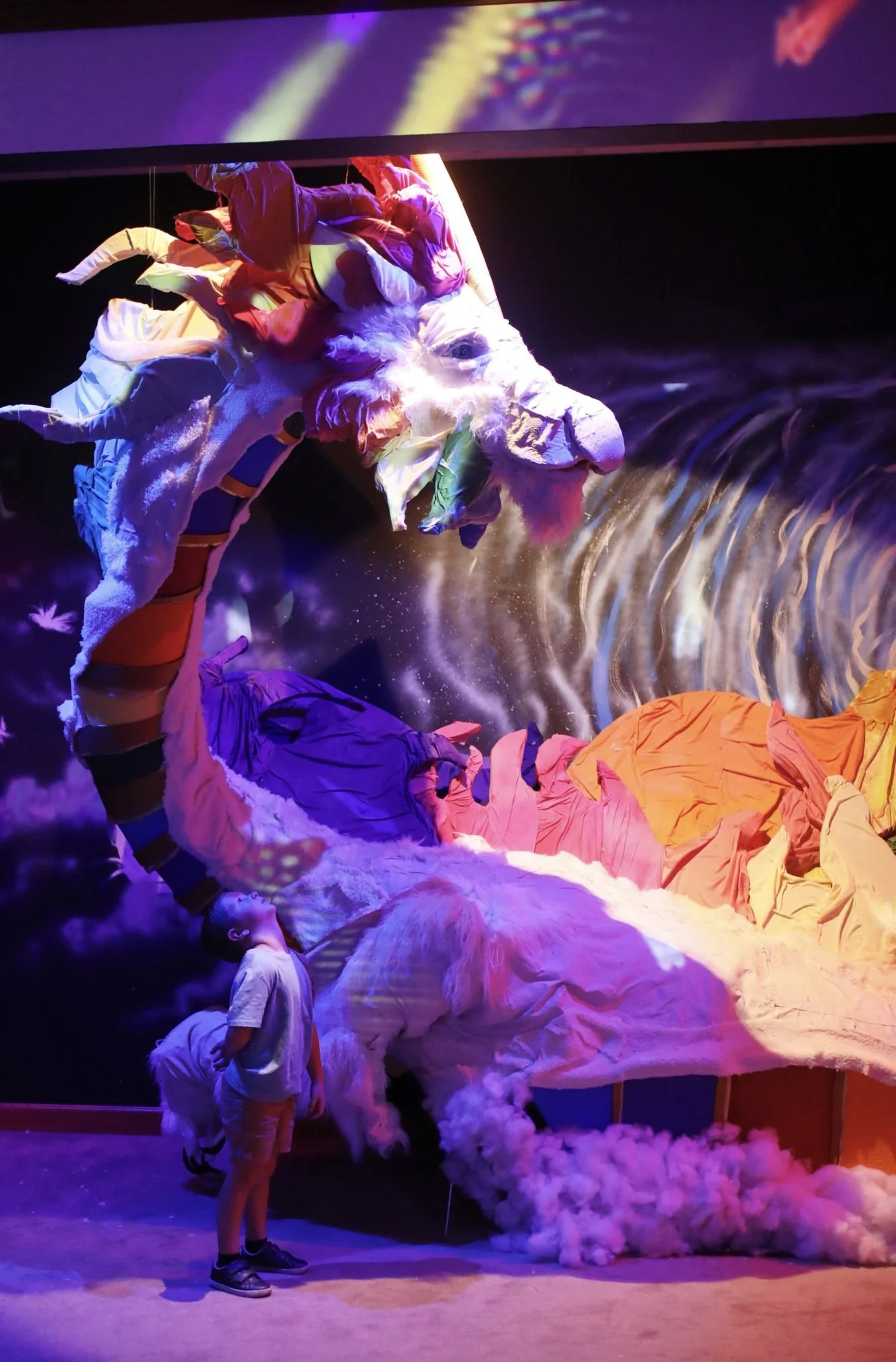How AI and Creative Tools Are Empowering Artists and Visitors in Modern Digital Exhibitions
By Kayla Smith
Dreamscapes: An immersive art experience
We’re living through an exciting moment of digital transformation, and the art world is right in the middle of it. The gallery experience is evolving far beyond paintings on a wall or sculptures in a room. Today’s exhibitions are immersive, interactive, and shaped by technology. Whether in-person or online, the gallery is becoming a space where tech isn’t just a backdrop; it’s part of the creative experience.
Across this new wave of immersive art spaces, one thing is consistent: artists and curators are using artificial intelligence (AI) and digital tools to create exhibitions that are more inclusive, accessible, and memorable. These tools are opening up new ways for people to connect with art, personalize their visit, and even take part in the creative process themselves.
Bringing Art to Life Through AI
AI is starting to play a real role in how exhibitions are imagined and brought to life. It’s becoming a creative partner for artists and curators, offering suggestions that align with audience interests, enhancing visual storytelling, and even helping shape what gets shown.
For example, AI can analyze visitor behavior and recommend artworks or tailor programming to individual tastes. This kind of personalization can transform a passive viewing into something more meaningful and resonant.
One of the most exciting advancements in digital storytelling is the use of an AI video generator. This powerful tool allows artists and cultural institutions to easily produce high-quality promo videos, artist interviews, and behind-the-scenes features — without the need for a full video production team. By automating tasks like editing, scripting, and visual effects, an AI video generator streamlines the process, saving time and reducing costs. Most importantly, it helps create emotionally engaging content that connects with audiences even before they visit in person.
Personalized Takeaways: A Tangible Connection in a Digital World
One of the big questions in digital exhibitions is how to create a lasting, personal connection — something you can hold onto, literally or figuratively. More and more exhibitions are tackling this by offering visitors something to take home: custom print cards.
These cards might feature a favorite artwork, a quote from an artist, or even a photo snapped inside the show. Some venues include print cards as part of the admission experience. This is especially popular in family-friendly or educational settings where kids can design their own souvenirs. Using simple design tools, visitors can add images, text, and filters to make something uniquely theirs.
Most people pin these on a board, stick them on the fridge, or share them online, continuing the conversation long after the exhibition closes.
Enhancing the Visitor Journey
AI and digital tools are becoming a thoughtful part of the visitor journey. Imagine walking into an exhibit and being greeted by an AI concierge that builds a custom tour based on your preferences. That kind of personalization helps deepen engagement and turns a traditional gallery visit into something more exploratory and immersive.
Touchscreens, virtual guides, and QR codes are now common features, offering visitors instant access to artist bios, related works, or even process videos. For younger or more tech-savvy audiences, this interactive layer can turn a visit into a kind of gamified experience — one that invites curiosity and play.
Empowering Artists and Curators
Artists are using AI tools in all kinds of creative ways like generating ideas, composing layouts, experimenting with color palettes, or even writing text. These tools aren’t meant to replace human creativity — they’re here to enhance it. Think of them as digital co-creators, offering new directions and possibilities.
Curators, too, are tapping into AI to improve how exhibitions are designed and experienced. With tools that analyze visitor flow, time spent in specific areas, and audience feedback, curators can fine-tune future shows for better engagement. AI is also helping behind the scenes with inventory, archiving, and navigating digital collections more efficiently than ever.
Case Study: Immersive AI in Action
Take Dreamscapes, a traveling digital art exhibit that toured cities across Europe. The creators used AI-generated soundscapes and interactive lighting to build a multisensory environment. Visitors could stop by kiosks and create their own art cards, choosing colors, shapes, and abstract forms to reflect their experience. They could take home a physical memento or send it to themselves digitally.
The team also used AI to generate teaser trailers, artist videos, and recap reels — all shared across social media to boost visibility and keep audiences engaged. As more people returned to reflect on the experience and share their recordings, a sense of community began to take shape around the exhibit.
Looking Ahead: A New Era of Access
AI and creative tools are opening up the art world to more people than ever before. For visitors with different abilities, these tools can provide alternative ways to engage — through text-to-speech guides, interactive subtitles, or hands-free navigation. These options make exhibitions more inclusive and invite a wider range of perspectives and participation.
There’s also a sustainability angle. Digitizing elements of an exhibition can reduce waste and lower production costs while still offering a rich, compelling experience. It’s a win-win for audiences as well as institutions.
Final Thoughts
As digital exhibitions become more common, AI and creative tools are moving from novelty to necessity. Whether it’s auto-generated promo content or personalized take-home cards, technology is expanding the ways we experience art.
What’s most exciting is how these tools are helping artists, curators, and visitors alike feel more connected to the creative process. This isn’t just the future of exhibitions — it’s already happening. And it’s making the art world more engaging, accessible, and imaginative for everyone.














